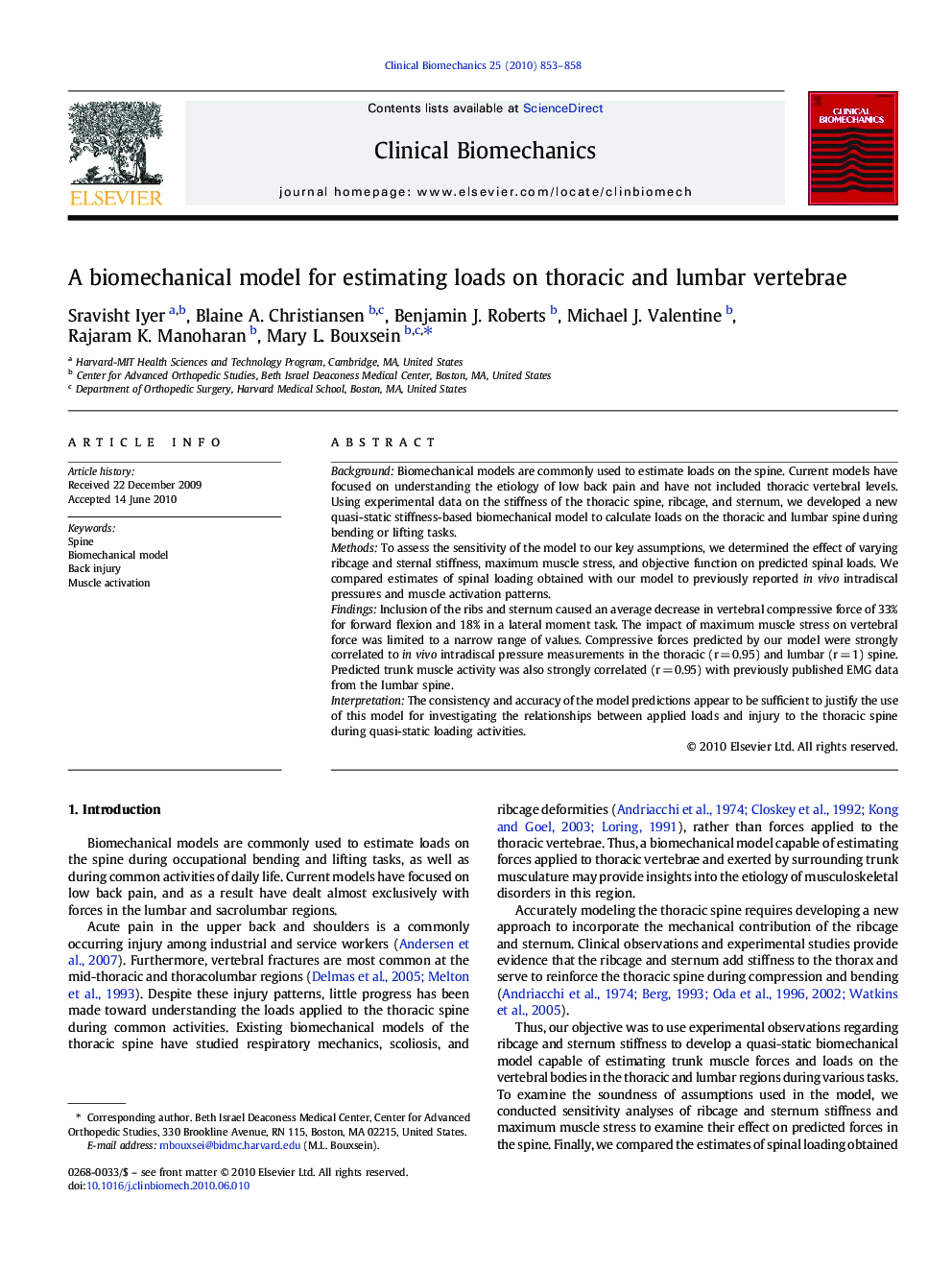| Article ID | Journal | Published Year | Pages | File Type |
|---|---|---|---|---|
| 4050978 | Clinical Biomechanics | 2010 | 6 Pages |
BackgroundBiomechanical models are commonly used to estimate loads on the spine. Current models have focused on understanding the etiology of low back pain and have not included thoracic vertebral levels. Using experimental data on the stiffness of the thoracic spine, ribcage, and sternum, we developed a new quasi-static stiffness-based biomechanical model to calculate loads on the thoracic and lumbar spine during bending or lifting tasks.MethodsTo assess the sensitivity of the model to our key assumptions, we determined the effect of varying ribcage and sternal stiffness, maximum muscle stress, and objective function on predicted spinal loads. We compared estimates of spinal loading obtained with our model to previously reported in vivo intradiscal pressures and muscle activation patterns.FindingsInclusion of the ribs and sternum caused an average decrease in vertebral compressive force of 33% for forward flexion and 18% in a lateral moment task. The impact of maximum muscle stress on vertebral force was limited to a narrow range of values. Compressive forces predicted by our model were strongly correlated to in vivo intradiscal pressure measurements in the thoracic (r = 0.95) and lumbar (r = 1) spine. Predicted trunk muscle activity was also strongly correlated (r = 0.95) with previously published EMG data from the lumbar spine.InterpretationThe consistency and accuracy of the model predictions appear to be sufficient to justify the use of this model for investigating the relationships between applied loads and injury to the thoracic spine during quasi-static loading activities.
